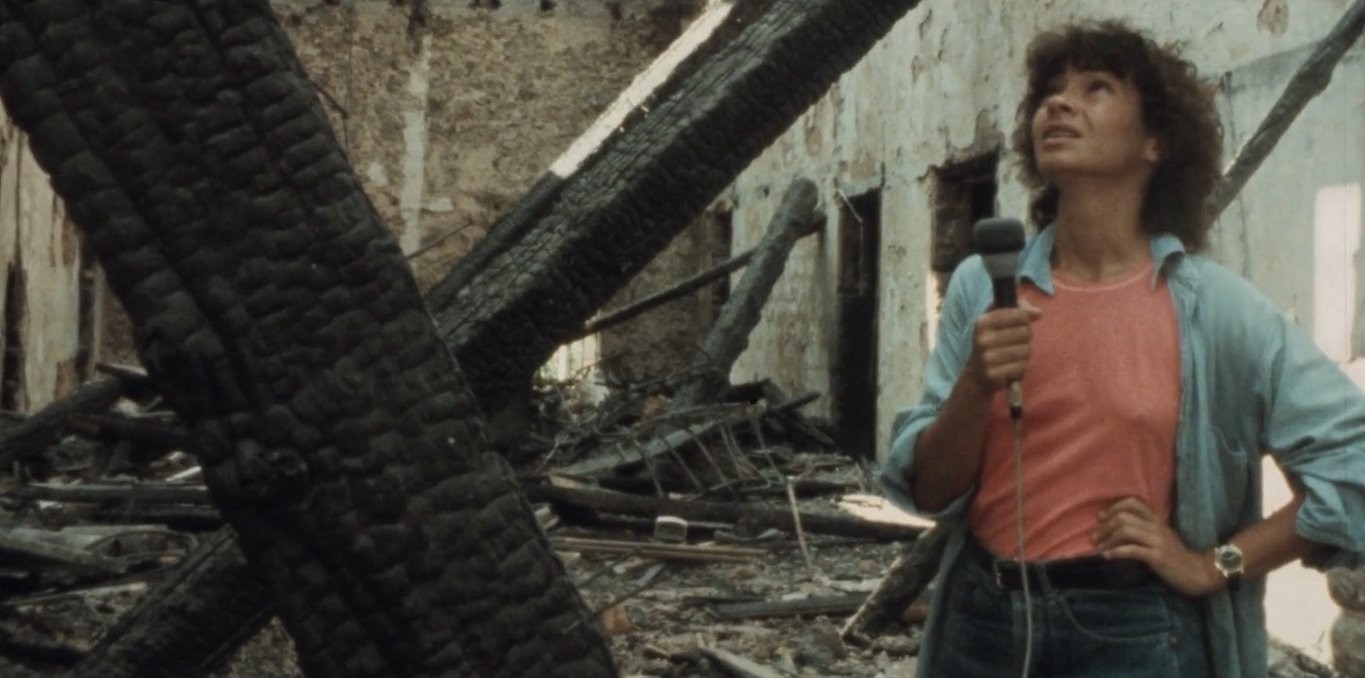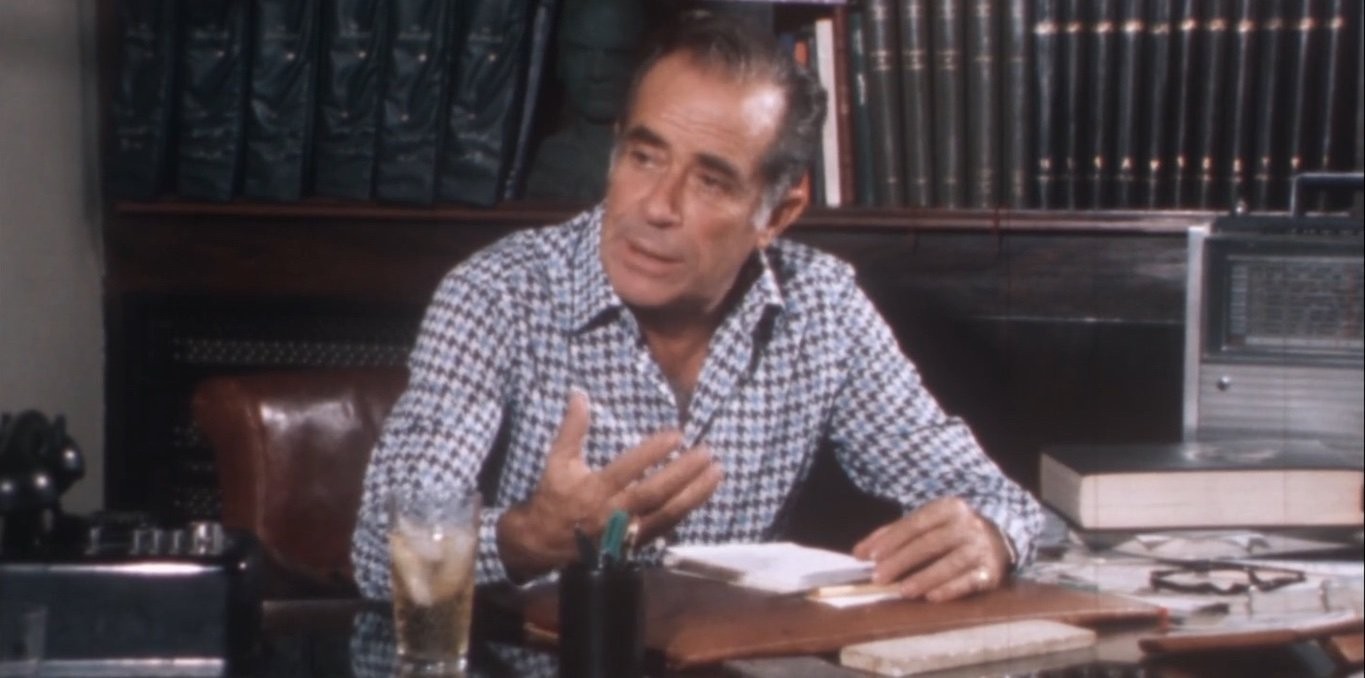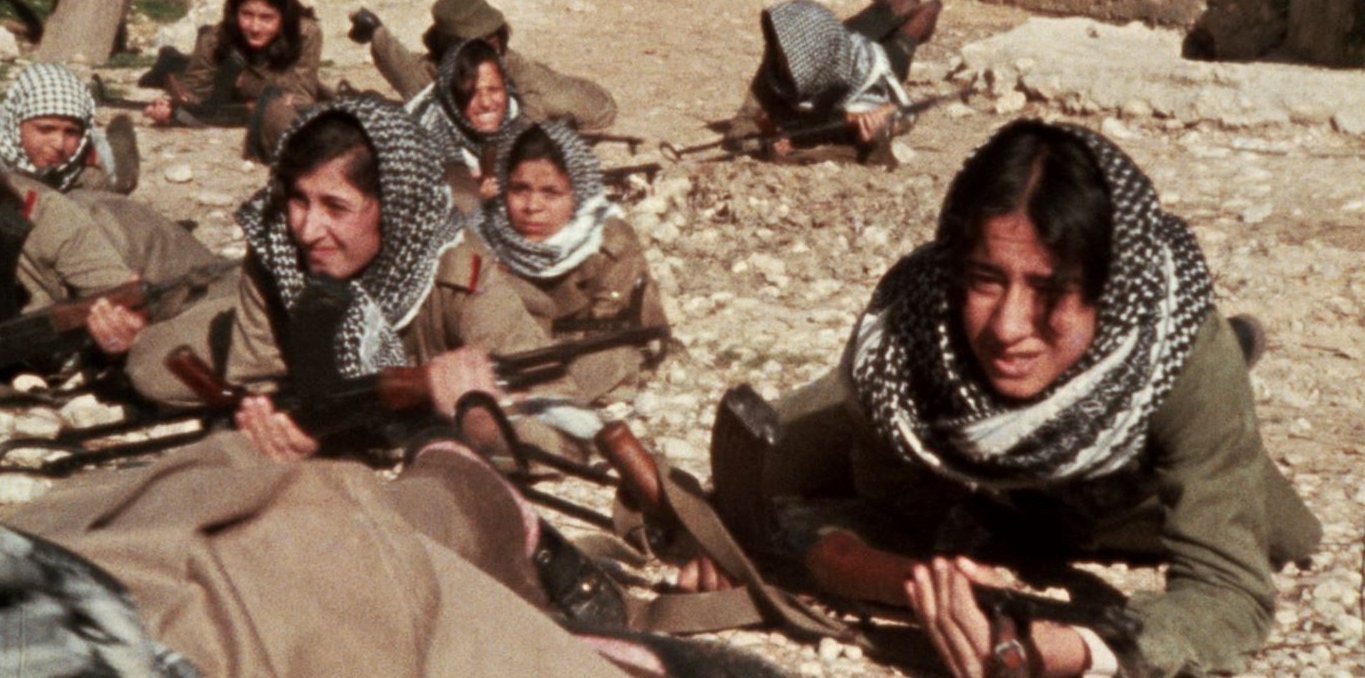Les films de Jocelyne Saab

A dive into the work of one of the most important filmmakers to have documented anticolonial struggles.
Franco-Lebanese filmmaker Jocelyne Saab (1948–2019) devoted her life to bearing witness, fully aware of the actions and images needed to counter historical violence. Born into a bourgeois Christian family, she grew up in Beirut, only a few kilometers from Palestinian refugee camps, to whose cause she quickly became sensitive. Politically engaged, she studied economics in Paris before becoming a journalist. Initially a war reporter for French television, one of her reports—on Palestinian women involved in the resistance—was rejected and censored by the public broadcaster France 3, for which she was working at the time. From then on, she struck out on her own, building a prolific body of work devoted to justice, decolonial both in form and intent. She worked across every medium: reportage, documentary, film essay, fiction, video experimentation, photography, installation. She also worked tirelessly to preserve Lebanon’s cinematic memory through the project Mille et une images, and pursued her cultural decolonization efforts with an international festival of cultural resistance films.
Jocelyne Saab’s work could easily have been lost to the history of cinema, and it is thanks to the invaluable efforts of those close to her—through the Friends of Jocelyne Saab Association—that her films and archives have been reconstructed, restored, and brought back into the light. In the text Itinéraire en pointillés d’un processus de restauration collectif IA Dotted Journey of a Collective Restoration Process), published in a special issue of Hors champ dedicated to Lebanese documentary cinema, Mathilde Rouxel—project lead for the restoration of Saab’s films and collaborator of the filmmaker during the last six years of her life—emphasizes the crucial importance of circulating these images: “Institutions list, preserve, conserve. But for history to be written, archives must be as widely accessible as possible. If the feeling is not the same when leafing through Jocelyne’s handwritten notes as when reading their scanned images on a computer screen, the potential of the digital should not be overlooked—especially in the case of a body of work like Jocelyne Saab’s: multicultural, transnational, one that anyone can appropriate and make speak from wherever they stand.”
Today, we must contribute to circulating this work, these images, these words. Saab speaks of a decimated place—she speaks of exile and war, of ruins and absences. But above all, she speaks of resistance, survival, and dignity. She speaks of utopia, of a new society, of a memory that will not disappear—even if it must first be captured on film, then transferred to digital files, and disseminated online…
Naomie Décarie-Daigneault
Artistic Director of Tënk
3 products

Beirut, My City
Subscription access
In 1982, Jocelyne Saab's 150-year-old family home burns down. In tandem with the Lebanese playwright Roger Assaf, she decided to travel through her city, which was under siege by the Israelis, and to report on the situation in Beirut, the departure of the Palestinians and the incomprehension of the civilians who were suffering from the war.

For a Few Lives
Subscription access
Portrait of Raymond Eddé, a candidate in the Lebanese presidential elections and a staunch opponent of the sectarian war. During the 1975–1976 conflicts, he and his team actively searched for those who had gone missing in the war, whether Christian, Druze, or Muslim.

Palestinian Women
Subscription access
Filmmaker Jocelyne Saab gives a voice to Palestinian women, often overlooked victims of the Israeli-Palestinian conflict.

Beirut, My City
Subscription access
In 1982, Jocelyne Saab's 150-year-old family home burns down. In tandem with the Lebanese playwright Roger Assaf, she decided to travel through her city, which was under siege by the Israelis, and to report on the situation in Beirut, the departure of the Palestinians and the incomprehension of the civilians who were suffering from the war.

For a Few Lives
Subscription access
Portrait of Raymond Eddé, a candidate in the Lebanese presidential elections and a staunch opponent of the sectarian war. During the 1975–1976 conflicts, he and his team actively searched for those who had gone missing in the war, whether Christian, Druze, or Muslim.

Palestinian Women
Subscription access
Filmmaker Jocelyne Saab gives a voice to Palestinian women, often overlooked victims of the Israeli-Palestinian conflict.
